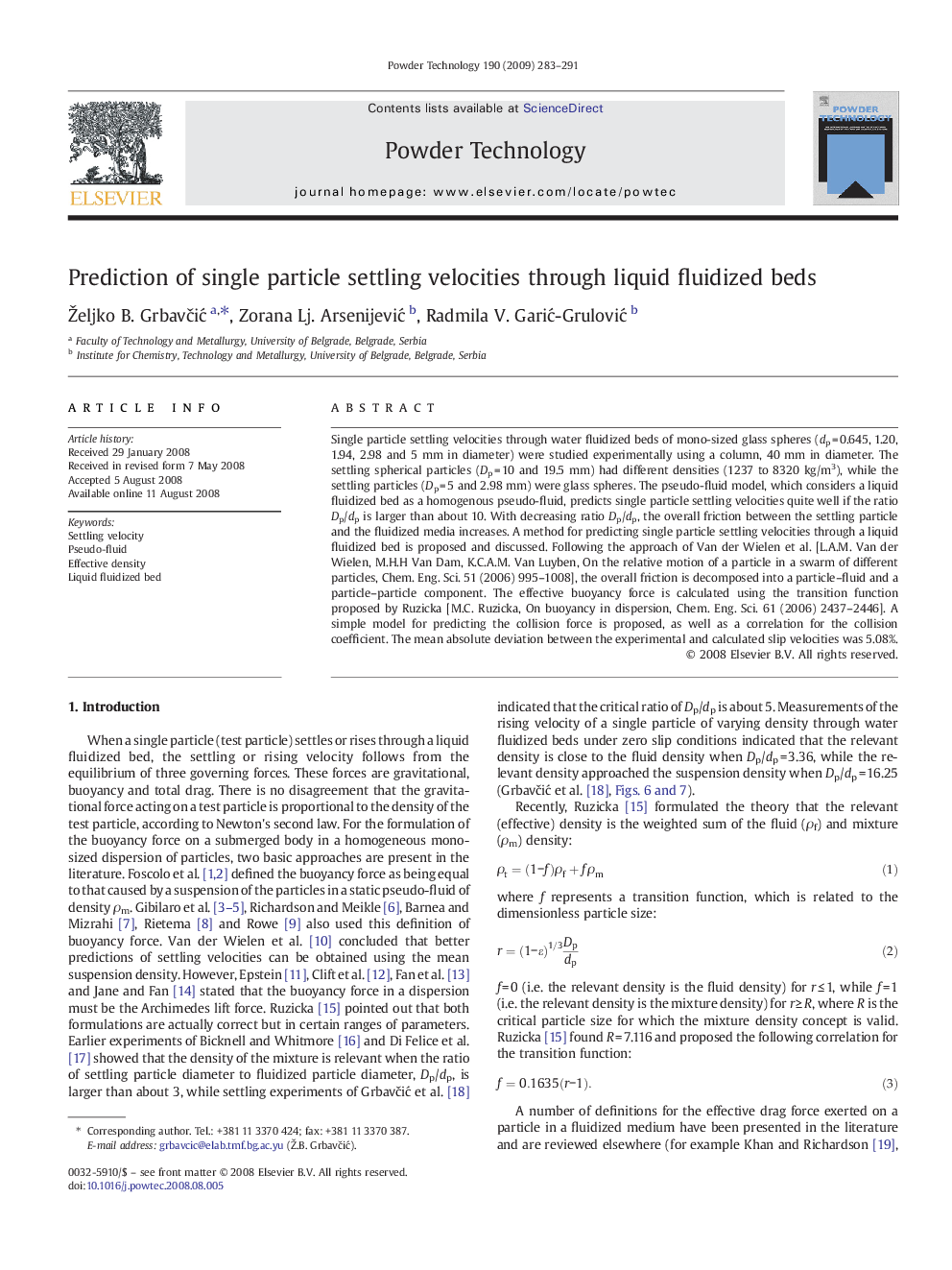| کد مقاله | کد نشریه | سال انتشار | مقاله انگلیسی | نسخه تمام متن |
|---|---|---|---|---|
| 238127 | 465743 | 2009 | 9 صفحه PDF | دانلود رایگان |

Single particle settling velocities through water fluidized beds of mono-sized glass spheres (dp = 0.645, 1.20, 1.94, 2.98 and 5 mm in diameter) were studied experimentally using a column, 40 mm in diameter. The settling spherical particles (Dp = 10 and 19.5 mm) had different densities (1237 to 8320 kg/m3), while the settling particles (Dp = 5 and 2.98 mm) were glass spheres. The pseudo-fluid model, which considers a liquid fluidized bed as a homogenous pseudo-fluid, predicts single particle settling velocities quite well if the ratio Dp/dp is larger than about 10. With decreasing ratio Dp/dp, the overall friction between the settling particle and the fluidized media increases. A method for predicting single particle settling velocities through a liquid fluidized bed is proposed and discussed. Following the approach of Van der Wielen et al. [L.A.M. Van der Wielen, M.H.H Van Dam, K.C.A.M. Van Luyben, On the relative motion of a particle in a swarm of different particles, Chem. Eng. Sci. 51 (2006) 995–1008], the overall friction is decomposed into a particle–fluid and a particle–particle component. The effective buoyancy force is calculated using the transition function proposed by Ruzicka [M.C. Ruzicka, On buoyancy in dispersion, Chem. Eng. Sci. 61 (2006) 2437–2446]. A simple model for predicting the collision force is proposed, as well as a correlation for the collision coefficient. The mean absolute deviation between the experimental and calculated slip velocities was 5.08%.
A method for predicting single particle settling velocities through a liquid fluidized bed is proposed. The overall friction is decomposed into a particle–fluid and a particle–particle component and the effective buoyancy force is calculated using the transition function proposed by Ruzicka [Chem. Eng. Sci. 61 (2006) 2437–2446]. The mean absolute deviation between the experimental and calculated slip velocities was 5.08%.Figure optionsDownload as PowerPoint slide
Journal: Powder Technology - Volume 190, Issue 3, 25 March 2009, Pages 283–291